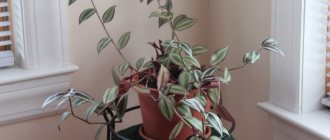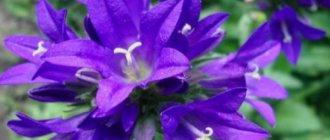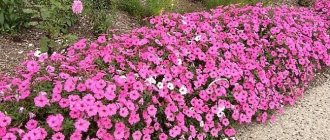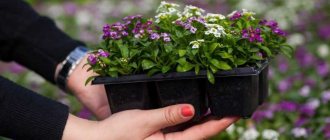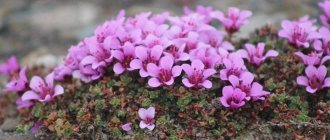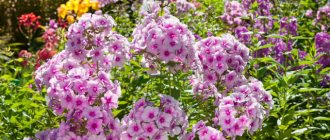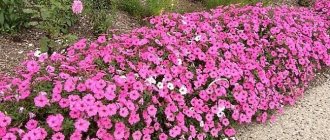Origin
It is not possible to establish exactly where viola came from, also known as violet (from Latin Víola). The first mention of the fragrant flower comes in the 10th century, in one of the Byzantine books on agriculture. Further traces of the viola can be found in the history and art of Ancient Rome and Greece, where it played the role of not only a flower of sadness, but also a medicinal plant.
Pansies
There are several versions of when exactly viola began to be cultivated. According to one, this happened in the 18th century thanks to Miller F., the most famous English florist. According to another, the exact date 1542 is mentioned (Golovkin B.N.). In Russia, this flower became famous only at the end of the 18th century. It was at this time that the Altai violet (Viola altaica) was brought to St. Petersburg from Altai by the botanist Palass P. At the same time, a kind of boom in new varieties and hybrids began. The American capped viola appears for the first time. And also the well-known pansy, which is a hybrid of three varieties.
Today, more than 500 species are known, according to some sources about 700 (since some types of flowers are endemic).
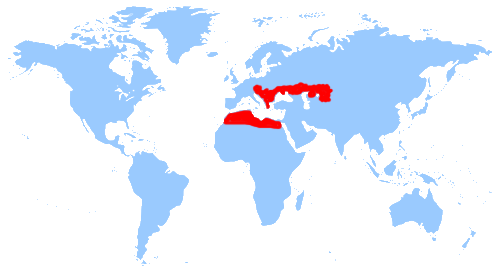
Homeland of viola (violet)
Description
Since the genus includes a fairly large number of species, scientists took one typical plant, which they use as a guide when describing any viola flower. The representative of the species was the fragrant violet (Víola odoráta), by the way, listed in the Red Book.
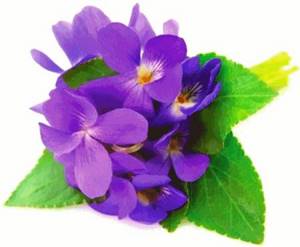
Viola odorata
The plant can be either annual, biennial or perennial. Most often, these are herbaceous forms, but subshrubs (endemic to the Andes) are also found. The average length is about 15 cm, but there are violets from 3 cm (Alpine, Cotyledon) to 40 cm (Sakhalin, modest). The leaves can be simple, alternate or pinnately dissected, collected in a basal rosette or arranged in a regular order. Flowers - axillary, zygomorphic, bisexual, solitary; in most cases the lower petals are larger. Most often the colors are blue, yellow, white or red. The fruit is box-shaped, the seeds are small (on average 750 pieces per 1 gram).
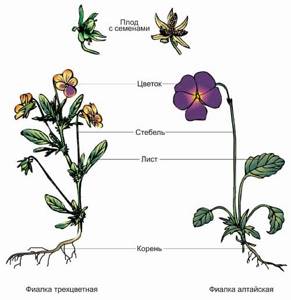
Flower structure
Depending on the preferences of the gardener, you can choose varieties and hybrids with bright colors, various shapes, sizes and delicate aromas. By choosing the right plants, you can ensure that from spring to autumn you will have a blooming flower bed. Just type “viola flowers photo” in the search bar and you will be amazed at the diversity of such a seemingly modest flower.
The varieties with the longest flowering period are pansies and horned viola. Altai viola is distinguished by two flowerings per season. Viola Wittrock with rather large bright flowers, there are even black shades.
Landing
Planting “Pansies” is not difficult. There are several ways: sowing seeds in open ground, growing seedlings in the usual way and using the snail method.
Sowing in open ground
Seeds are planted in open ground starting from the first days of May when the average daily temperature is equal. Before sowing, the seeds are kept in a zircon solution for a day. The optimal calculation of seeds is: 50-60 seeds per meter of loosened furrow.
In the case of planting a flower according to a figured pattern (for example, for a flower bed), it is preferable to use holes located at a distance of at least 5 centimeters from each other.
To ensure guaranteed germination, three seeds should be placed in each hole. The seeds should be deepened by 5 mm and covered with ground soil, moisten the soil and cover the planting with fine sawdust to prevent excessive moisture loss. A week later, when the first shoots appear, the area should be shaded with a piece of dark film. But you can learn from this article how to sow Chinese carnation seeds for seedlings.
Video of growing Viola flowers from seeds:
Growing seedlings
Seeds are planted for seedlings in the same way as in open ground. The difference lies in the picking, which is carried out twice - after one and two weeks according to the scheme: 6 by 6 cm. Finally, the viola is transferred to a permanent place two months after sowing. Young plants are planted in holes at a distance of 25 cm from each other. But what perennial Lupine seedlings look like, and how they can be planted, is described in great detail in this article.
Sowing seeds into a snail
The fairly new “snail” technique is increasingly used by gardeners. There are several reasons for this:
- simplicity and convenience of the method;
- high seed germination; guaranteed soil savings;
- no need for complex care.
The optimal method is when the seeds are sown in pre-moistened soil, poured onto a laminate substrate no more than 2 mm thick.
The soil is laid on the substrate in a layer of 1 cm (two centimeters from the end edge remain free). Seeds are distributed along the upper edge of the soil, then a section of the backing tape is carefully rolled into a roll (it is more convenient to fill the roll in small sections). The finished snail should be secured with a rubber band and placed in a suitable container, covered with a plastic bag until germination. It will also be interesting to learn about how Aastra is grown from seeds in a snail.
Location
Since viola prefers regions with a temperate climate, it is found most often in the Northern Hemisphere, although there are species that thrive in Brazil and South Africa.
When growing on the sunny side (apartment window sill), it is recommended to place taller plants, for example, hibiscus, closer to the window.
Depending on the species, violets can grow in the garden either on the sunny side or in a slightly shaded area. The only condition is moderate watering and the presence of fertile, loose soil. Without care it quickly runs wild.
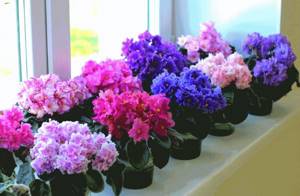
Violets on the windowsill
Characteristics
Wild species of viola are perennial plants, but in floriculture these flowers are often grown as biennials. In the first year, the plant forms a herbaceous bush from 15 to 30 cm in height, depending on the variety, and flowering occurs the next year. There are many varieties of pansies: single, multi-flowered, double, large-flowered, ampelous.
Pansies can come in a variety of colors
Viola is a warm and light-loving plant, but easily tolerates light partial shade. To avoid problems with the plant in the flowerbed, you need to water it regularly, but make sure that the water in the soil does not stagnate. Excess moisture can contribute to diseases such as powdery mildew and blackleg. Pansies develop best in fertile soil. The plant responds well to fertilizing with mineral fertilizers.
Care
Viola is quite easy to maintain and may be well suited for beginners or those who cannot constantly be in the flower garden. It is enough to follow the following tips:
- do not use fresh organic matter;
- regularly feed with mineral fertilizers;
- periodically plucking fading flowers can prolong the flowering period;
- in dry summers, watering is required, otherwise the flowers become smaller;
- Be sure to cover it for the winter season; tree foliage is quite suitable for this.
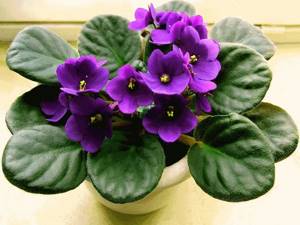
Violets
Pests, diseases
In general, violet is a fairly unpretentious plant and has no specific diseases. The most common are:
- Powdery mildew. The leaves, buds and stems become covered with a gray or whitish cobwebby coating, then black dots of fungi appear, which are the causative agents. Cause: heavy dew or large amounts of nitrogen. Control measures: pollination with ground sulfur, spraying with cuprazone, caratan, foundationazole, balance fertilizing.
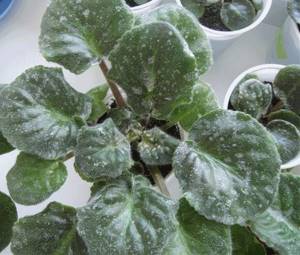
Powdery mildew - Spotting. First, various spots appear on the leaves, and then on the entire plant. Reason: infection. Control measures: complete destruction of seeds and plant residues, including those growing nearby, deep digging of the soil, spraying with foundationazole or Bordeaux mixture.
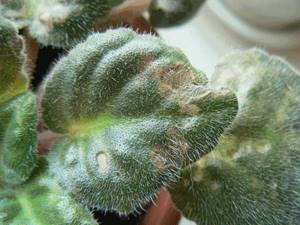
spotting
Pansies - description
Pansy (Vittorka violet), or viola , is a hybrid herbaceous plant of the Violet family. This is a highly branched, compact plant with dark green oval or ovate leaves below and narrow leaves at the top. The flowers are large, single, five-petaled, up to 10 cm in diameter with a contrasting spot of various shapes in the center. The color of the petals is the most varied, with spots and strokes of various sizes, or monochromatic. In our culture it is grown as an annual or biennial.
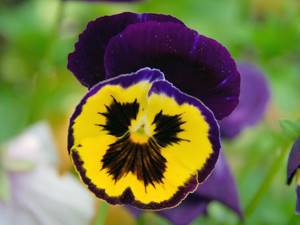
The variety of colors of pansies is incredible: from white to almost black. And one-color, and with various strokes and spots, and very tiny, and almost the size of a child’s palm. Moreover, the color and size may vary, although not dramatically, among different flowers of the same plant. It seems that each flower is unique, like a snowflake.
Reproduction
Almost any subspecies of viola can be propagated by seeds or cuttings. The only thing that should be taken into account is that hybrids sown through a second collection of seeds are worse (smaller flowers, paler shades).
Depending on whether the plant is an annual plant or not, they begin to prepare seedlings. For early ripening violets, the month of March is suitable, which allows for early flowering. The first shoots appear already on days 14-17. You should wait for two true leaves and only then plant them on the site.
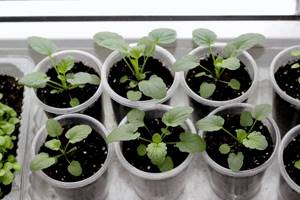
Propagation by seeds
When growing biennials, seeds begin to be planted in June. For this, you can no longer use a room, but cold greenhouses or beds. Transplantation to a permanent place no earlier than the end of August. Perennial violas are most often planted directly into the ground before winter.
In general, plants tolerate replanting manipulations well even during flowering, but be sure to maintain a distance between them of at least 15 cm. The seed pods should be removed during the time, avoiding self-seeding, as this leads to a reduction in the size of the flower. Although, with timely planting of such “wild” seedlings, negative consequences can be avoided.
Perennial or other most interesting varieties can be propagated by cuttings. To do this, from May to mid-June, a cutting with three nodes is cut off at the top of the plant. Rooting takes about three weeks. The plants obtained in this way bloom in the same year. With later cuttings, the flowering period is postponed to the spring of next year.
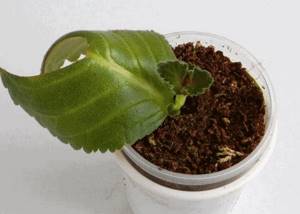
Leaf propagation
As a recommendation:
- to increase volume, you can plant several plants in one hole, but this is only good for annuals. Perennials do not tolerate “territory encroachment” very well;
- when obtaining seedlings in apartment conditions, universal soil purchased in a store is well suited, but the best results are obtained by soil collected in the fall in deciduous forests;
- As a top dressing during transplantation, you can use ash and crushed eggshells.
Caring for Viola Wittrock
Growing annual viola, grandiflora and other varieties of this plant does not imply any special actions, but you will have to remember a few rules. First of all, it is necessary to constantly maintain soil moisture, but also not to flood the flowers.
If the summer turns out to be humid, then watering may be minimal or may be completely absent, but a hot summer promises frequent watering and constant monitoring of the condition of the soil.
The next item is weeds, which must be constantly removed. And also make sure that faded flowers and seed pods do not remain on the bushes, otherwise the intensity of flowering will be noticeably reduced.
Ammonium nitrate or superphosphate is used to feed bushes. Fertilizers are calculated as follows: 25–30 g per square meter of planted area.
Partners
Viola is a very friendly plant that gets along with almost any flowers. Some sources indicate that viola does not really like the proximity of cacti or ferns, but there is also advice to the contrary, most likely this is due to the incorrect placement of taller plants.
The only thing you should remember is timely seating. This is especially true for flowers growing in pots - the presence of a large number of children or several rosettes is unacceptable.
Watch an interesting video about growing violets

